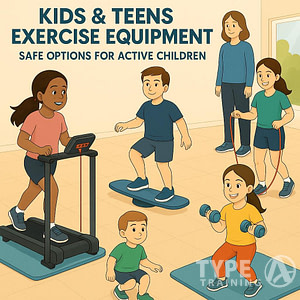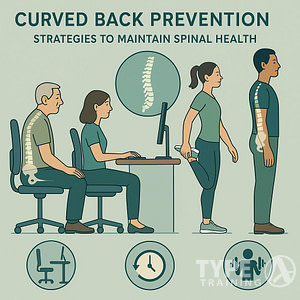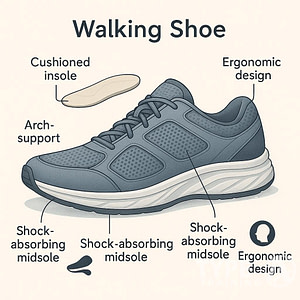Meal prepping can transform the way you approach your daily meals, offering not just convenience but also a path toward reaching your health goals.
By planning and preparing your meals in advance, you save time during busy weeks and reduce food waste.
Meal prepping is a powerful tool that brings efficiency to your lifestyle while supporting nutritional goals.
Popular posts:
Embarking on the meal prep journey may seem daunting at first, but it simplifies your routine once you get the hang of it.
Smart grocery shopping and effective food storage solutions are key to making the process seamless.
By incorporating simple meal prep hacks, you make good use of your resources and time.
Imagine opening your fridge and finding meals ready to eat, cutting down kitchen time significantly.
This approach not only ensures that you have healthy meals on hand but also helps to control portions and promote mindful eating.
Embrace the meal prep lifestyle and see the benefits unfold.
Key Takeaways
- Meal prep boosts efficiency and supports health goals.
- Smart planning and storage are crucial.
- Meal prepping cuts down kitchen time.
Understanding Meal Prep
Meal prepping can transform your cooking routine and save you time, money, and energy.
By planning meals in advance, you ensure that healthy eating becomes easier and more accessible.
Defining Meal Prep
Meal prep involves preparing meals or ingredients before you intend to eat them.
This can mean cooking full meals in advance or preparing components like proteins, grains, and vegetables.
This concept allows you to spend less time daily on meal decisions and cooking.
You can opt for individually portioned meals, ensuring you have just the right amount of food for each meal.
Ready-to-cook ingredients might also be prepped, where you chop and portion everything.
This flexibility is one reason meal prep caters to diverse needs.
Benefits of Meal Prepping
Meal prepping offers numerous advantages.
Primarily, it introduces convenience into your eating habits.
By spending a few hours each week on meal preparation, you avoid daily cooking, freeing up your time for other activities.
Make-ahead meals can also prevent last-minute unhealthy food choices, as the food is already prepped and aligned with your dietary goals.
It also supports portion control, which can be crucial for those aiming to maintain or lose weight.
With prepared meals, sticking to your nutrition plan is a more effortless task.
Types of Meal Prepping
There are varied approaches to meal prepping, each suited to different lifestyles and preferences.
Grab-and-go meals are perfect for someone with a packed schedule, offering quick solutions for breakfast or lunch. These often include ready-made salads or sandwiches.
Preparing individual portions ensures each meal is accounted for, making it zero hassle during busy weekdays.
Another type, ready-to-cook ingredients, revolves around prepping components so you can whip up fresh meals with minimal cooking time.
Experimenting with these types can help you discover what best fits your routine.
Getting Started with Meal Prep
To begin meal prepping effectively, focus on developing achievable goals, crafting a practical meal plan, and organizing a comprehensive shopping list.
This approach simplifies your weekly routine and supports your health objectives.
Setting Achievable Goals
Define your meal prep goals clearly. Are you aiming to save time, enhance nutrition, or manage portion sizes?
Identify your primary objective and quantify it. For instance, decide to prep four meals per week or incorporate vegetables into every meal.
Stay flexible and adjust your goals as needed. Tracking progress helps maintain motivation.
Use a journal or app to record achievements and challenges, so you can refine your strategies over time.
Creating a Meal Plan
Start by considering dietary preferences and nutritional needs.
Decide which meals you’ll prep for the week. Balance proteins, carbohydrates, and healthy fats.
Incorporate a variety of foods to prevent boredom.
Draft a weekly menu. Specify what dishes you’ll make and on which days they’ll be consumed.
This structure helps avoid last-minute cooking decisions that could undermine your health goals. Try batch-cooking items like grains or proteins to use in multiple meals.
Assembling a Shopping List
Create a detailed shopping list based on your meal plan. Break it down by sections such as produce, proteins, and pantry items.
This strategy minimizes grocery store time and reduces the likelihood of unnecessary purchases.
Check your pantry before shopping to avoid buying duplicates.
Consistently use your list to streamline shopping and ensure you have all necessary ingredients for upcoming meal preps.
Smart Grocery Shopping
Effective grocery shopping is crucial for successful meal prep. It involves choosing quality ingredients, finding the best deals, and employing savvy shopping strategies.
Choosing Quality Ingredients
Selecting the right ingredients can make a significant difference in your meal prep outcomes.
Prioritize fresh vegetables and fruits, checking for vibrant colors and firmness. Ensure whole grains like brown rice and quinoa are part of your cart for nutrient-rich meals.
Avoid highly processed foods. Look for pantry staples such as olive oil, canned beans, and spices.
These items can enhance flavor without compromising health. Consider the source and seasonality of produce whenever possible to ensure quality and reduce costs.
Finding the Best Deals
Saving money on groceries is vital.
Start by comparing prices across different grocery stores.
Use store-specific apps and websites to find discounts and promotions.
Buying in bulk can be economical, especially for non-perishable pantry staples like rice and pasta.
Consider shopping at local farmers’ markets for fresh fruits and vegetables. They often offer better prices and quality than large supermarkets.
Don’t forget to check out clearance sections for discounted items that are still safe to consume, minimizing food waste.
Grocery Shopping Tips
Planning ahead streamlines your shopping experience.
Make a list based on your meal plan to prevent impulse buys and save time.
Stick to the outer aisles of the grocery store where fresh produce and whole grains are typically located.
Pay attention to product placement; eye-level items tend to be pricier. Check lower and higher shelves for better deals.
Shop at times when stores are less crowded, like early mornings or late evenings, to avoid stress and have a more pleasant experience.
Preparation Strategies
Optimizing your meal preparation can save time and ensure you eat nutritious meals throughout the week. This involves batch cooking, efficient vegetable and fruit preparation, and proper storage.
Batch Cooking Techniques
Batch cooking is a time-saver, allowing you to prepare multiple meals in one go.
Start with versatile staples like cooked grains—rice, quinoa, or pasta.
Cook large quantities and portion them into daily servings.
Consider roasting vegetables such as carrots, broccoli, and bell peppers on a single baking sheet. Use olive oil, salt, and pepper for seasoning.
Make soups or stews that can transform into different meals.
Try preparing a large batch of your favorite soup and store it in individual containers for easy reheating.
Batch cooking simplifies your meal planning and ensures ready-to-eat meals any time.
Prepping Vegetables and Fruits
Efficiently prepping vegetables and fruits can drastically cut down your cooking time.
Wash vegetables and fruits thoroughly before use.
Chop fresh vegetables like carrots, bell peppers, and cucumbers into bite-sized pieces and store them in airtight containers.
For fruits, consider keeping whole fruits like apples and oranges in easy reach, encouraging a quick, healthy snack.
Blanch vegetables such as green beans or broccoli to extend freshness.
For leafy greens, washing, drying, and storing in a paper towel-lined container keeps them crisp.
Prepping allows quick access to ingredients when cooking or snacking.
Storing Prepped Ingredients
Proper storage of prepped ingredients is crucial for maintaining freshness and flavor. Airtight containers and zipper bags are essential tools.
Use transparent containers to easily see contents and avoid food waste. Label each container with the ingredient name and date it was stored.
For cooked grains and roasted vegetables, let them cool before sealing to prevent moisture buildup.
Store fresh vegetables wrapped in paper towels within containers to maintain crispness.
Properly storing prepped ingredients ensures you have fresh options readily available for any meal.
Food Storage Solutions
Optimizing food storage is essential for effective meal prep. You need the right containers, proper techniques to extend shelf life, and an organized space to keep things efficient and fresh.
Using the Right Containers
Choosing the right storage containers makes a difference.
Opt for BPA-free plastic, glass, or stainless steel.
Look for airtight seals to prevent leaks and preserve freshness. Divided containers are helpful for portioning meals and storing various foods without mixing flavors.
For frozen vegetables, durable freezer-safe containers are ideal. They prevent freezer burn and maintain food quality. Utilize stackable options to save space in your fridge and freezer.
Consider labeling containers with contents and dates. This helps you identify and use items before they expire.
Maximizing Shelf Life
Effective storage techniques can extend food shelf life. Refrigerate perishables promptly, including leftovers and fresh produce like berries.
You can use airtight containers or resealable bags to keep air out and freshness in.
For items like meat, fish, and dairy, maintain consistent cold temperatures. Frozen vegetables should be stored below 0°F to retain nutrients.
Also, use moisture-absorbing liners in vegetable drawers to keep greens fresh.
Remember to store similar foods together to create micro-climates that preserve specific items better.
Regularly rotate your stock, placing older items at the front to ensure they are used first.
Organizing Your Storage Space
Creating an organized system in your kitchen storage is crucial. Use clear containers so you can quickly see the contents.
Group similar items for easy access, like storing all frozen vegetables in one section of the freezer.
Dedicate specific shelves or drawers for certain categories such as snacks or meal components.
This organization helps minimize chaos and speeds up meal prep.
Shelving units with adjustable heights can accommodate different container sizes and make better use of vertical space.
Maximize underutilized spaces, like the back of cabinet doors, for storing smaller items or hanging utensils.
Meal Prep Hacks
Discover efficient and creative methods to streamline your meal planning and preparation process.
Implement practical strategies to save both time and money, while also making the most of your leftovers in a delicious way.
Time-Saving Tips
Streamline your meal prep by setting aside a few hours each week dedicated solely to this task.
Use devices like slow cookers or instant pots to cook multiple meals at once.
Cutting vegetables in bulk and portioning out snacks ahead of time significantly reduce daily prep time.
Consider creating a rotating menu to simplify decision-making.
Batch-cooking grains such as rice or quinoa lets you quickly assemble meals later.
Designating specific kitchen zones for meal prep keeps the workflow smooth and organized.
Budget-Friendly Ideas
Plan your meals around sales and seasonal produce to cut costs.
Buying in bulk, especially for staples like grains and pasta, also reduces expenses.
Frozen fruits and vegetables are nutritious and often cheaper than fresh, while also lasting longer.
Prepare meals using affordable protein sources like beans, lentils, or canned tuna.
Investing in quality storage containers ensures that food stays fresh longer, minimizing waste.
Keep an eye out for store loyalty programs or discounts on bulk purchases to stretch your budget further.
Creative Use of Leftovers
Transform leftovers into new dishes to reduce waste and keep meals exciting.
Last night’s roasted vegetables can become today’s hearty soup or sandwich filling.
Leftover pasta can be turned into a baked casserole with a few added ingredients.
Consider making frittatas or omelets with leftover meats, cheeses, and veggies.
Creating a versatile sauce or dressing can also refresh your leftovers.
With a bit of creativity, yesterday’s dinner can easily become tomorrow’s lunch without feeling repetitive.
Frequently Asked Questions about Food Prep
Meal prepping can be a game-changer for creating healthy eating habits. It helps you make efficient use of time, manage portions for weight loss, and maintain a balanced diet while ensuring food safety.
What are the top strategies for beginners starting with meal prep?
Start simple by choosing recipes with similar ingredients.
Set aside a specific time each week for planning and preparation.
Invest in quality containers for storage to keep meals fresh throughout the week.
What are the potential drawbacks of meal prepping?
It can initially be time-consuming to plan and prepare.
The upfront cost of ingredients can be higher. If not done correctly, meals might not stay fresh, leading to food waste.
How can meal prepping contribute to weight loss?
Controlling portion sizes and pre-selecting healthy recipes aids weight management.
It helps avoid impulse eating and supports sticking to a dietary plan.
Having meals ready makes it easier to resist unhealthy snacks.
What are essential tips for meal prepping on a weekly basis?
Create a detailed shopping list based on your meal plan.
Cook larger batches of versatile items like grains and proteins.
Label containers with dates to track freshness. Use different cooking methods for variety.
What are some healthy meal prep tips for maintaining a balanced diet?
Incorporate various food groups in your meals.
Include a mix of proteins, vegetables, and whole grains.
Rotate recipes weekly to prevent monotony.
Use herbs and spices for flavor without adding calories.
How can one ensure food safety when meal prepping for multiple days?
Refrigerate meals promptly to prevent bacteria growth. Use airtight containers and store items at the right temperature.
Consume prepared meals within three to four days. Always reheat food to the appropriate temperature before eating.













